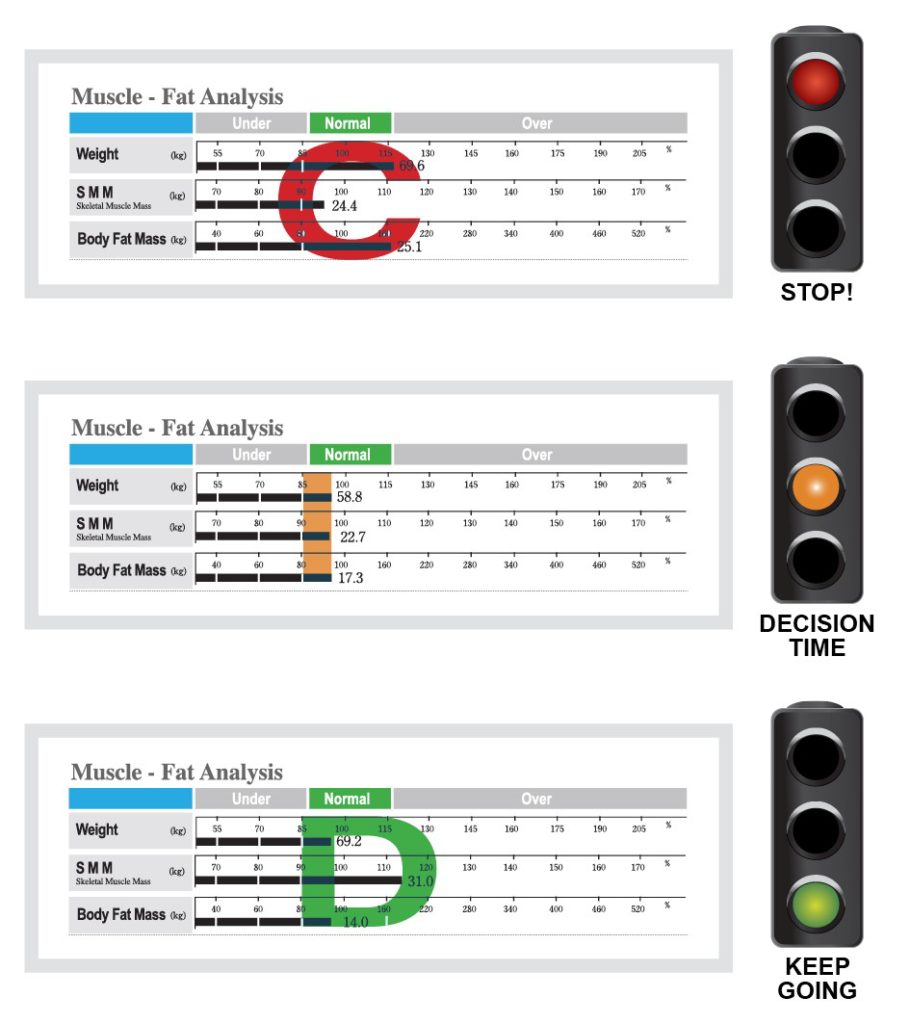Interpretation Guide for InBody Scan From Nutritionist At Found My Physique

This page will give you a detailed briefing about every section of the InBody Scan results sheet.
Total body weight alone is not a clear indicator of a person’s overall health as it does not distinguish the amount of fat or lean body mass in the body.
You can use your InBody scan to track various goals, and it is up to you to decide which metrics you wish to focus on for your training. For example: If your goal is muscle gain, you may concentrate on the SMM (kg) as well as balance out your limbs and weaker body parts in the Segmental Lean Analysis section.
If your goal is Body Fat Loss, you may want to focus on the increases and decreases in Body Fat Mass (kg) and (%) as well as weight recommendations and how far your results are from the ‘100% normal’ population data.

Total Body Water
TBW is all the water in the body and is approximately 60% of your total weight. Ideally, your TBW should be in the normal range or over. Usually, individuals with a higher degree of muscle mass will have higher levels of TBW.
Protein
Protein consists of nitrogen, and high nitrogen levels within cells indicate good levels of muscle mass and health. A lack of protein implies a lack of muscle mass is possibly indicating poor nutrition and malnourishment. Protein is directly related to intracellular water. Therefore, a lack of protein suggests a lack of intracellular water, which in turn suggests poor nutrition. Ideally, your protein content should be within or exceed the average range set out below the reading.
Minerals
Minerals consist of two types, osseous mineral, and non-osseous minerals. The osseous mineral is bone, where non-osseous minerals are those found in all other parts of the body. Mineral mass is closely related to soft lean mass. If you have more lean mass, the weight of bones strength, which in turn increases the bone mineral.
Total Body Water
Displayed in Litres (L). 1L = 1kg
Soft Lean Mass
The sum of Your Total Body Water, Protein and Non-Osseous Minerals (calculated by deducting your Bone Mineral Content from the total Minerals).
Fat-Free Mass
Is your weight minus your Body Fat Mass (how much you would weight if you had no fat on your body)
Weight
The sum of your Total Body Water, Protein, Minerals, and Body Fat Mass.
Calculated Analysis

Body Mass Index (BMI)
Calculated by use of a formula that divides your weight by the square of your height and does not take into account your overall body composition. A highly muscled individual may be classified as overweight when using the BMI formula which can be misleading. Although BMI is popular as a metric, it can be inaccurate in some cases.Percent Body Fat (PBF)
The percentage of your body fat calculated by the total mass of body fat divided by total body mass. A good indicator of how lean you are. This metric is useful for those aiming for weight loss, fitness/physique competitions, body recompositions and overall health status.| Description | Women | Men |
|---|---|---|
| Athletes | 14–20% | 6–13% |
| Fitness | 21–24% | 14-17% |
| Average | 25–31% | 18-24% |
| Obese | 32% and higher | 25% and higher |


No comments:
Post a Comment